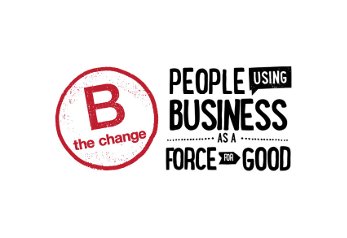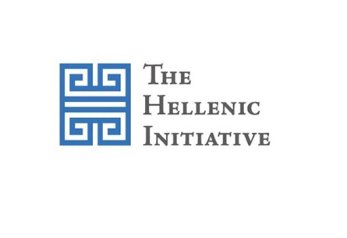
The world needs to become more sustainable – no doubt about it. Luckily, the consensus among politicians and societies all over the world that action is needed sooner rather than later is rising. The mitigation of global warming is, in the majority of cases, the most popular first association that comes to mind when reflecting on and debating sustainability. While this is certainly a crucially important objective, sustainability has additional dimensions.
This article focusses on the importance of an all-encompassing approach to sustainability. It aims to explain why proportionate banking regulation is also able to substantially contribute to a diversified, inclusive and sustainable financial sector.
Lately, in policy debates and financial services discussions on sustainability and sustainable finance, reference is often made to “ESG”, which essentially says that the three elements of Environmental, Social and Governance need to be taken into account when assessing the sustainability of a project, a company, an investment, etc. Let’s look at why the social component of sustainable finance must not be overlooked in the debate.
To begin with, imagine the following situation. There is a manufacturing company which employs 1,000 people and which needs a bank loan in order make some necessary upgrades and get new machinery for its manufacturing site. Unfortunately, this company emits quite some carbon in its manufacturing process. As a result, when one thinks about how environmentally sustainable this company is, the pendulum would surely swing in the direction of brown (as opposed to green). Arguing on the basis of the carbon emissions, banks would possibly not be encouraged to lend any money to this company.
However, there is one additional element to this story that I did not mention before: if the company cannot make its modernisations and buy new machines to stay competitive, it would need to close down, and the 1,000 workers would be laid off. This example’s tricky constellation brings me to the point mentioned at the beginning: sustainable means more than green. It needs to be based on environmental and social considerations alike.
In situations like the one in the example, it is certainly a hard task to strike the right balance. I would argue that the world needs to become more sustainable, and a lot of effort from all of us are inevitable. However, from a social point of view, forcing this company out of business without already having alternative employment available to them could not be defended and categorised as a sustainable action. Things can and will change over time and the manufacturing industry, in collaboration with dedicated research, will become greener. Right now, however, we are in a transitional phase, and the welcome triumphal march of green should not come to the detriment of socially-committed policies. This should be the clear message to decision-makers, who are in the middle of discussing and designing the sustainable finance framework.
Apart from that, it is important to note that there are banking institutions that do not strive for profit maximisation. Not all banks are purely stakeholder-driven institutions that only care about the profit they make. In the savings and retail banking sector, for a great number of banks, laws and statutes state that their mandate is not to generate the maximum possible amount of profit. These banks’ business models are different. Their mandate is first and foremost to meet people’s needs and create a return for society. Of course, a bank should be profitable – just as any other corporate – but substantial parts of these profits are re-invested in the local economy, which benefits both the financial markets and society in which these banks operate.
Locally-focussed savings and retail banks also carry out a wide range of philanthropic activities with great commitment. These include projects for the elderly generation and the youth as well as educational, cultural and sports activities. Additionally, these savings and retail banks sometimes have particularly socially-focussed banks in their network.
As an Austrian, I could mention Zweite Sparkasse as an example. Zweite Sparkasse promotes social and financial inclusion and offers financial services to people who cannot find any other partner in the banking sector. Its objective is to help stabilise these people’s financial situation sustainably and return to a normal banking relationship. It does not aim to make a profit but is bound to the savings bank idea of serving the public good.
I am convinced that locally-focussed banking models, widely found within the savings, co-operative and retail banking sector, are sustainable, valuable from the point of view of social inclusion and have a very positive impact. Unfortunately, they have been challenged by recent regulatory and economic events. For instance, prudential regulation designed for large internationally-active banks is being applied almost equally across the European banking sector and increasing the pressure. Moreover, the environment of low, or even negative, interest rates is more challenging to these locally-focussed banks than other banking institutions. Furthermore, they tend to maintain a larger network of branches, also in remote areas, based on the motivation that they want to serve people in the best possible way. The ever-increasing burden of reporting requirements, multiple times per year, only add to the pressure.
Proportionate regulation could be a suitable way to deal with this challenge. Less risky players should be faced with fewer administrative requirements, for instance in the reporting area. It is not the right way to overburden Europe’s savings and retail banks, with their unique business models and deep social commitment, by adding up un-balanced and disproportionate administrative requirements that are designed for institutions with different business models, risk profiles, sizes and nature of activities.
The European sustainable finance framework, currently being designed, is a fantastic opportunity for decision makers to further develop the idea of proportionate banking regulation becoming a reality. This will help locally-focussed banks, which are often smaller and less risky, to compete on an equal footing. Finally, diversity is good for financial stability and for everyone seeking access to finance.
In conclusion, I would like to emphasise the crucial importance of the social dimension of sustainable finance and the need for proportionate banking regulation. Smart policy developments in these areas will support an inclusive European banking sector.










